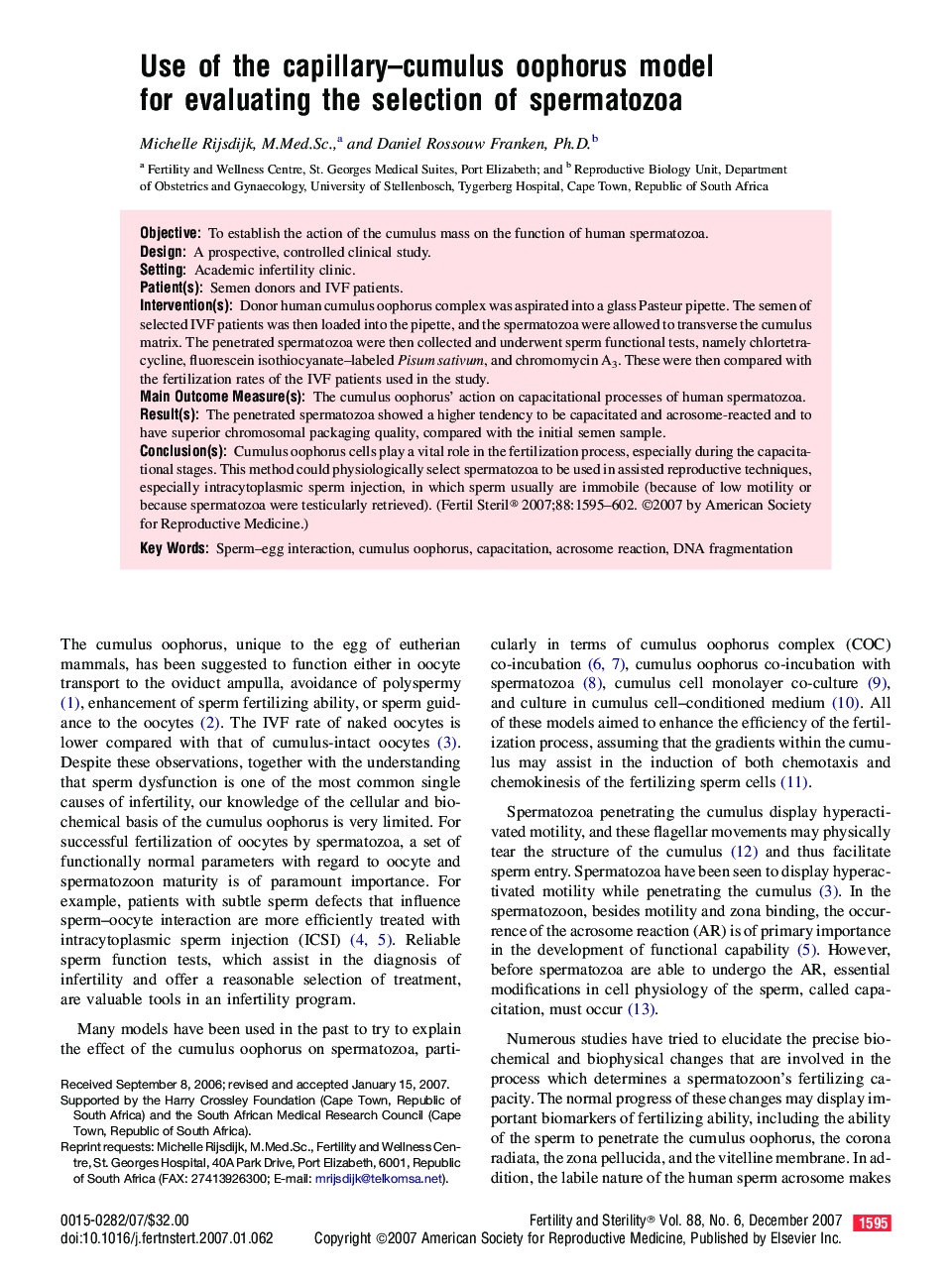| Article ID | Journal | Published Year | Pages | File Type |
|---|---|---|---|---|
| 3935244 | Fertility and Sterility | 2007 | 8 Pages |
ObjectiveTo establish the action of the cumulus mass on the function of human spermatozoa.DesignA prospective, controlled clinical study.SettingAcademic infertility clinic.Patient(s)Semen donors and IVF patients.Intervention(s)Donor human cumulus oophorus complex was aspirated into a glass Pasteur pipette. The semen of selected IVF patients was then loaded into the pipette, and the spermatozoa were allowed to transverse the cumulus matrix. The penetrated spermatozoa were then collected and underwent sperm functional tests, namely chlortetracycline, fluorescein isothiocyanate–labeled Pisum sativum, and chromomycin A3. These were then compared with the fertilization rates of the IVF patients used in the study.Main Outcome Measure(s)The cumulus oophorus' action on capacitational processes of human spermatozoa.Result(s)The penetrated spermatozoa showed a higher tendency to be capacitated and acrosome-reacted and to have superior chromosomal packaging quality, compared with the initial semen sample.Conclusion(s)Cumulus oophorus cells play a vital role in the fertilization process, especially during the capacitational stages. This method could physiologically select spermatozoa to be used in assisted reproductive techniques, especially intracytoplasmic sperm injection, in which sperm usually are immobile (because of low motility or because spermatozoa were testicularly retrieved).
